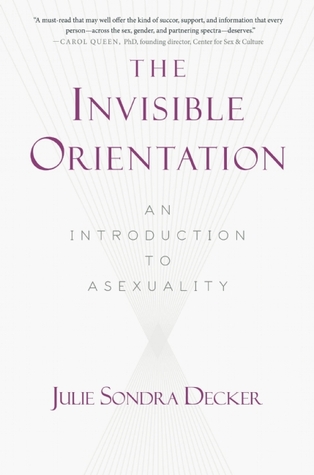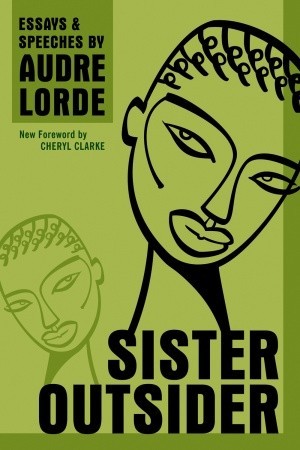 Hey Scouts! Please welcome the one and only Lucia to the blog! Tell them how awesome they are, okay?
Hey Scouts! Please welcome the one and only Lucia to the blog! Tell them how awesome they are, okay? Hi everyone! August has finally arrived, and with it four prompts to have fun with. I know nonfiction is hard for some people, so here’s a list of cool books that you could read for the nonfiction prompt:
Hi everyone! August has finally arrived, and with it four prompts to have fun with. I know nonfiction is hard for some people, so here’s a list of cool books that you could read for the nonfiction prompt:Sister Outsider by Audre Lorde
A collection of fifteen essays written between 1976 and 1984 gives clear voice to Audre Lorde's literary and philosophical personae.
These essays explore and illuminate the roots of Lorde's intellectual development and her deep-seated and longstanding concerns about ways of increasing empowerment among minority women writers and the absolute necessity to explicate the concept of difference—difference according to sex, race, and economic status.
The title Sister Outsider finds its source in her poetry collection The Black Unicorn (1978). These poems and the essays in Sister Outsider stress Lorde's oft-stated theme of continuity, particularly of the geographical and intellectual link between Dahomey, Africa, and her emerging self.
(Summary from goodreads.)
 Queer: A Graphic History by Meg John-Barker and Julia Scheele
Queer: A Graphic History by Meg John-Barker and Julia ScheeleActivist-academic Meg-John Barker and cartoonist Julia Scheele illuminate the histories of queer thought and LGBTQ+ action in this groundbreaking non-fiction graphic novel.
From identity politics and gender roles to privilege and exclusion, Queer explores how we came to view sex, gender and sexuality in the ways that we do; how these ideas get tangled up with our culture and our understanding of biology, psychology and sexology; and how these views have been disputed and challenged.
Along the way we look at key landmarks which shift our perspective of what’s ‘normal’ – Alfred Kinsey’s view of sexuality as a spectrum, Judith Butler’s view of gendered behaviour as a performance, the play Wicked, or moments in Casino Royale when we’re invited to view James Bond with the kind of desiring gaze usually directed at female bodies in mainstream media.
Presented in a brilliantly engaging and witty style, this is a unique portrait of the universe of queer thinking.
(Summary from goodreads.)
Mini Review: I read this a while ago, and while there were many things I liked, there were several things that bothered me, too, and a few points that I disagree with altogether. I enjoyed the diverse illustrations and think the language is easy to understand even without an academic background. However, I was disappointed that, although the Kinsey scale is discussed, asexuality is only brought up very briefly – so briefly, in fact, that I couldn’t find it without rereading the whole book – and aromanticism isn’t brought up at all. Reading the book, I got the impression that the author’s approach to the subject was too broad for the length of the text. As a result, I felt like there was a lack of depth to the book.
All in all, I think the book is a good starting point for learning about Queer Theory.
 Fun Home: A Family Tragicomic by Alison Bechdel
Fun Home: A Family Tragicomic by Alison BechdelIn this graphic memoir, Alison Bechdel charts her fraught relationship with her late father.
Distant and exacting, Bruce Bechdel was an English teacher and director of the town funeral home, which Alison and her family referred to as the Fun Home. It was not until college that Alison, who had recently come out as a lesbian, discovered that her father was also gay. A few weeks after this revelation, he was dead, leaving a legacy of mystery for his daughter to resolve.
(Summary from goodreads.)
 But Not Up Here: Poems About Remembering In Neon by RoAnna Sylver
But Not Up Here: Poems About Remembering In Neon by RoAnna SylverWords about love, loss, grief, PTSD, and jokes with no punchline.
Steps toward finding yourself and singing down the stars.
(Summary from goodreads.)
 The Invisible Orientation: An Introduction to Asexuality by Julie Sondra Decker
The Invisible Orientation: An Introduction to Asexuality by Julie Sondra DeckerWhat if you weren't sexually attracted to anyone?
A growing number of people are identifying as asexual. They aren't sexually attracted to anyone, and they consider it a sexual orientation—like gay, straight, or bisexual.
Asexuality is the invisible orientation. Most people believe that "everyone" wants sex, that "everyone" understands what it means to be attracted to other people, and that "everyone" wants to date and mate. But that's where asexual people are left out—they don't find other people sexually attractive, and if and when they say so, they are very rarely treated as though that's okay.
When an asexual person comes out, alarming reactions regularly follow; loved ones fear that an asexual person is sick, or psychologically warped, or suffering from abuse. Critics confront asexual people with accusations of following a fad, hiding homosexuality, or making excuses for romantic failures. And all of this contributes to a discouraging master narrative: there is no such thing as "asexual." Being an asexual person is a lie or an illness, and it needs to be fixed.
In The Invisible Orientation, Julie Sondra Decker outlines what asexuality is, counters misconceptions, provides resources, and puts asexual people's experiences in context as they move through a very sexualized world. It includes information for asexual people to help understand their orientation and what it means for their relationships, as well as tips and facts for those who want to understand their asexual friends and loved ones.
(Summary from goodreads.)
Mini Review: I first read this book before I came out as asexual, and it really helped me define my identity. It’s very informative without being prescriptive, and contains a good list of resources for further reading. I like that you can read the different sections of the book out of order, which makes it easy to get answers to some of your questions first before reading the whole book.
I would recommend this book to people who are still figuring out their identity and everybody who wants to be an ally to aces.
 My Dear Boy: Gay Love Letters Through the Centuries by Rictor Norton
My Dear Boy: Gay Love Letters Through the Centuries by Rictor NortonDEAR BOY is an anthology of gay love letters between illustrious men for almost 2,000 years. Correspondents include Marcus Aurelius, St. Anselm, Erasmus, Calvacanti, Michelangelo, Sir Phillip Sydney, King James I & VI, Thomas Gray, von Kleist, Byron, Hans Christian Andersen, Melville, Whitman, Tchaikovsky, Wilde, Henry James, Frederick Wm Rolfe, Wilfred Owen, Hart Crane, T. E. Lawrence, Cocteau, Auden, Pasolini, Allen Ginsberg, Wm Burroughs, among others.
(Goodreads link.)
Mini Review: If you like love letters and queer history, this book is for you! I haven’t finished it yet, but what I have read so far has been both sweet and sad.
If you’ve been counting, you’ll notice that this is book number 6. The reason I didn’t count it is that it is extremely hard to get in print, and there is no eBook available. However, you can read much of it for free on the author’s website.
I hope you found something on the list that looks interesting to you! I tried to get some different types of books so hopefully there’s something for everyone. Of course, there’s a lot more out there
xoxo
Lucia








No comments:
Post a Comment
Note: Only a member of this blog may post a comment.